.
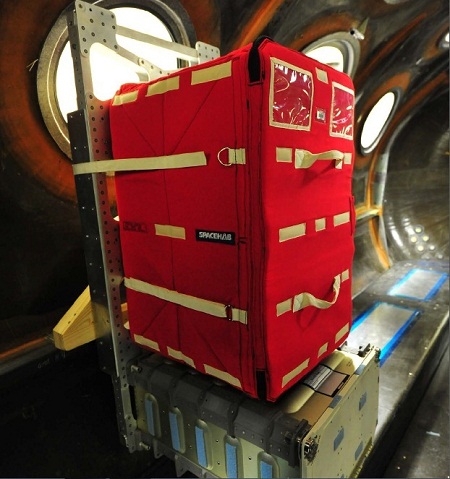
A SpaceShipTwo experiments package. (Credit: Virgin Galactic)
.
With all the attention given to Virgin Galactic’s impressive list of famous future space tourists (Ashton Kutcher! Richard Branson! Branson’s kids!), SpaceShipTwo’s impressive research capabilities for microgravity experiments have been largely overlooked.
According to SpaceShipTwo’s Payload Users Guide, the vehicle will be capable of carrying up to 1,300 lbs. (600 kg) of experiments into space, where they will experience 3 to 4 minutes of high-quality microgravity in a pressurized, shirt-sleeve environment. Small experiments can also be mounted on the exterior of the vehicle.
.

“Analytical models built on flight data from SpaceShipTwo’s test program, RocketMotorTwo’s ground firings, and SpaceShipOne flights indicate that during this time, typical gravity loads will be 10-3 to 10-5g,” according to the guide. “In some cases, it may be possible to further improve the quality of this microgravity by using techniques that trade pointing accuracy for microgravity quality.”
The WhiteKnightTwo carrier aircraft will be able to carry payloads as heavy as 30,000 lbs. (13,600 kg) on high-altitude missions. SpaceShipTwo and WhiteKnightTwo have matching pressurized useable payload volumes of 500 cubic feet (14 m3).
.
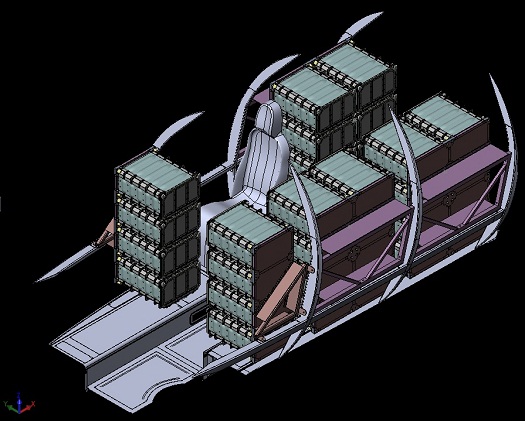
SS2 Cabin outfitted with a full set of 32 Middeck lockers bolted onto the rack system. (Credit: Virgin Galactic)
.
The vehicle will accommodate systems already used in orbital spaceflight, including space shuttle middeck lockers, cargo transfer bags, and server racks.
Virgin Galactic is targeting a number of research areas and groups:
“Researchers in Earth Science, Astronomy, Materials Science, and the Life Sciences
Technologists who want to advance the Technology Readiness Level (TRL) of their hardware before long duration space missions
Educators and Student Groups
Users who are new to flying experiments in Space. VG anticipates that new experiments and disciplines that currently do not exploit space systems will develop as a result of this new capability.”
.
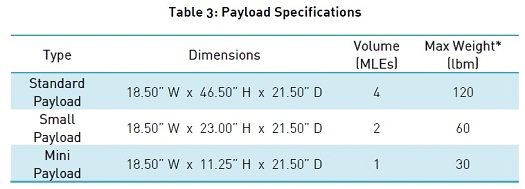
Virgin Galactic is promising “prices that are highly competitive with parabolic flights and sounding rockets,” although it provides no specifics in the guide. Flying a SpaceShipTwo full of experiments will not be cheap. It will cost the same as flying a spacecraft full of millionauts, not counting pre-flight integration and safety analysis.
“Generally speaking, pricing is set to be commensurate with pricing for our astronaut flights,” according to the guide. “This means that full flights will cost $1.2M before costs associated with payload analysis and integration. Payloads that occupy roughly the mass and volume of an astronaut and his or her seat will cost approximately the same as a single seat ticket price [$200,000], before the cost of integration and safety analysis.”
.
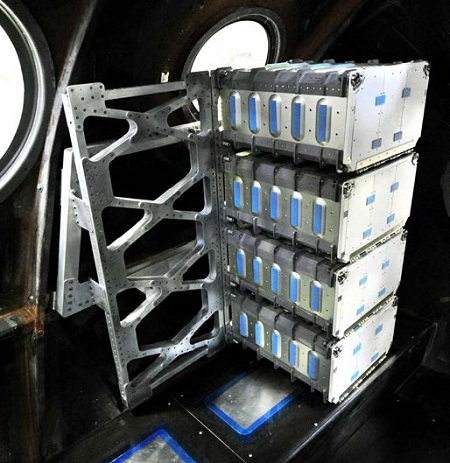
Two mounting plates shown inside of a SS2 cabin mockup. Four Mid-Deck lockers have been mounted to the plate at right, which is no longer visible behind the lockers. (Credit: Virgin Galactic)
.
The size of the emerging suborbital payloads market will have a major impact on Virgin Galactic’s ability to fly research flights. The larger the demand, the easier it will be to find $1.2 million worth of experiments to fill the ship. If the demand is relatively small, then researchers will have to wait longer to fly their experiment on SpaceShipTwo. Researchers might end up using providers such as XCOR Aerospace and Masten Space Systems if those companies can offer more frequent flights.
On the plus side, the large size of SpaceShipTwo will give researchers the ability to fly experiments that would not fit inside the much smaller vehicles offered by Virgin Galactic’s competitors. And the company is offering significant improvements over existing microgravity platforms.
.
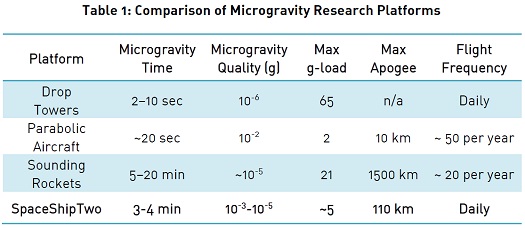
Research flights will not be the company’s top priority after it enters commercial service.
“Virgin Galactic has already signed up more than 550 future astronauts eager to fulfill their dreams of flying to space. We are committed to meeting our customers’ expectations; accordingly, our flight manifest is front-loaded with tourism flights—including our first commercial flight, on which we will fly our founder and first customer, Sir Richard Branson,” the guide states.
“However, we are actively investigating the possibility of conducting a small number of research payload flights in support of NASA’s Flight Opportunities Program as or among our first flights once SS2 has been cleared for commercial service.”
The table below “provides some tentative guidance as to when various types of research opportunities will be flown.”
.
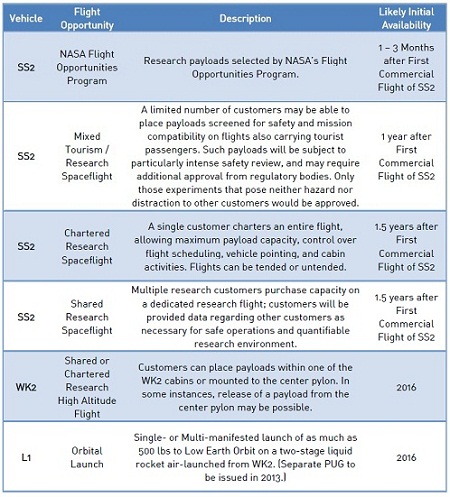
Virgin Galactic says that G-loads will be “dramatically gentler” than those on sounding rockets and other launch vehicles.
“Payloads should be designed to operate successfully under the nominal flight loads shown in Table 2 below,” according to the guide. “Those loads are summarized here: 3.4 g in the rearward direction (eyeballs in), 1.8 g in the sideways direction (eyeballs left/right) and 8.4 g in the downward direction (eyeballs down). The time spent at an elevated Nz is relatively short in duration: typically, less than 30 seconds above 3 g.”
.

.
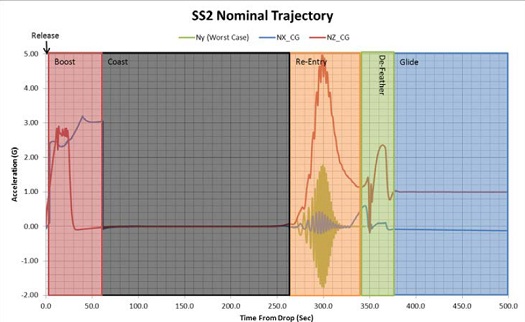
Nominal acceleration loads during all phases of SS2 flight. (Credit: Virgin Galactic)
Virgin Galactic sees SpaceShipTwo as a game changer for microgravity research.
“An enormous range of disciplines can benefit from access to space; but historically, such research opportunities have been rare and expensive,” Virgin Galactic President and CEO George Whitesides says in the guide. “At Virgin Galactic, we are fully dedicated to revolutionizing access to space for scientists, researchers, engineers, educators, and students.”
.
Quelle: Virgin Galactic
5871 Views
